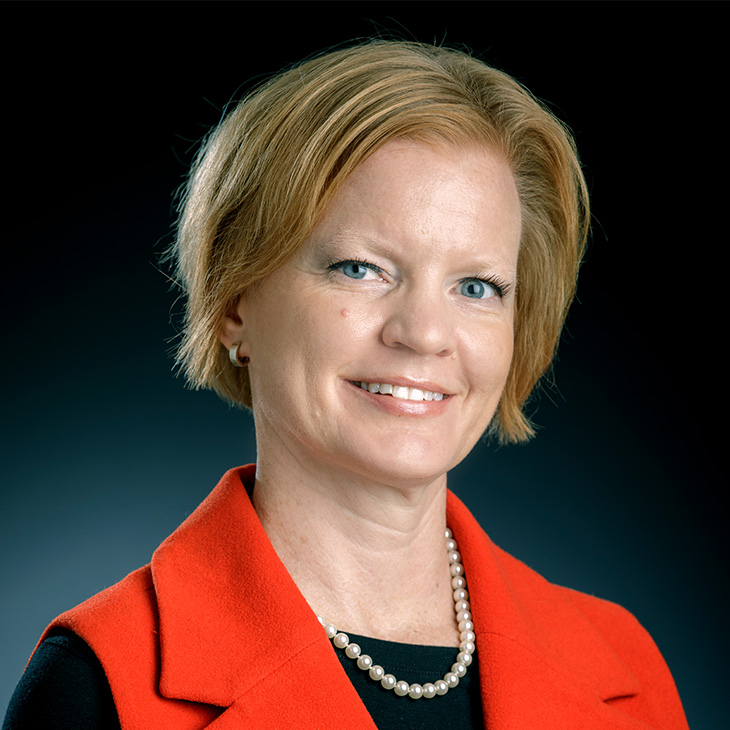
Vet Med Faces of Research: Dr. Meredyth Jones
Thursday, October 1, 2020
Dr. Meredyth Jones has been conducting research for the majority of her 18-year career in veterinary medicine. Board certified in large animal internal medicine, she is an associate professor of food animal medicine and surgery at Oklahoma State University’s College of Veterinary Medicine working in the college’s Veterinary Medical Hospital.
“I have participated in various topics of research including small ruminant bladder stones particularly in goats,” Jones said. “Now I’ve moved more into beef cattle lameness, specifically a condition called deep digital sepsis. This is an infection in the foot that has traveled into the very deep structures of the foot. It is very difficult to treat because of how much of the foot is involved and how deep that infection goes. Our goal is delivery of antimicrobials (antibiotics) into the foot directly focusing therapy on the foot itself. This can help us get a faster recovery for the animal, lessens pain faster, and it reduces our total use of antibiotics, which is important in food animals or animals we use for food.”
According to Dr. Jones the public is concerned about pain management in livestock and the use of antibiotics in food producing animals.
“I think the most important part of this research that everyone should understand is that the methods we are studying help us control pain very early on in the disease process, as soon as we can get to the animal and treat it,” she said. “It also uses a much lower dose of antibiotics than we would if we had to give antibiotics to the whole animal. With this research, we just treat the foot.
“What is really great about this research is that as soon as I get it done and we have the results, I and my team can immediately put that to use in our clinic. It’s really rewarding to do very applied research where you take it right out of the data sheet and apply it to a cow the next day. That is the end point and really why we’re doing the work.”
While Jones and her team can apply this research immediately in the hospital, they can also share it with other practitioners.
“We receive multiple phone calls daily from veterinarians and livestock producers who have issues with lame cattle,” Jones said. “Deep digital sepsis is often a part of that. Not only are we able to apply what we learn from our research in our own clinic, but we’re also able to disseminate that information to veterinary practitioners in private practice. We can tell them we have evidence this treatment works. So if an animal is too far away to come into our clinic, we can get that information to practitioners to use right away.”
Jones offers that if you are considering a research project, look at what all is involved.
“There are many layers to research and a lot of time spent problem solving. Research often doesn’t go the way you planned. If you are looking specifically into beef cattle lameness, learn as much as you can about the different conditions that cause cattle to become lame. There are many – deep digital sepsis is just one of those. Look at what causes beef cattle lameness and what treatments we currently have available. At the end of the day, research is about asking questions. For us, we look at deep digital sepsis and say we don’t really have a great way to treat this. What are some options? What gets done in people who have a similar problem? What gets done in horses that have a similar problem? Don’t just look at the species you are interested in. Look at the other literature including human literature. So broad thinking, ask questions and use resources to come up with new ways to treat that problem. Ask the question and go answer it with your research.
“I think it’s important for the public to understand that in addition to the clinic, where you can bring your dog or cat, exotic animal, horses, cattle, sheep, goats and pigs for treatment, there is all this research that we do. Many groundbreaking findings are generated every day at the OSU College of Veterinary Medicine. You may find answers to some specific topics you are really interested in or you may discover a topic that you didn’t know you were interested in and you can learn more about it. Keep your eye on research at the college; many good pieces of information are being developed every day.”
Vet Med Faces of Research is a monthly series designed to inform the public about the impact of the numerous studies being conducted at Oklahoma State University’s College of Veterinary Medicine. Advancing knowledge and understanding for the benefit of the lives and livelihoods of the people of Oklahoma is a critical element of OSU’s land-grant mission. If you would like to support research at the veterinary college, please contact Ashley Hesser, assistant director of development with the OSU Foundation, at 405-385-0715 or ahesser@osugiving.com.
MEDIA CONTACT: Taylor Bacon | Public Relations and Marketing Coordinator | 405-744-6728 | taylor.bacon@okstate.edu
